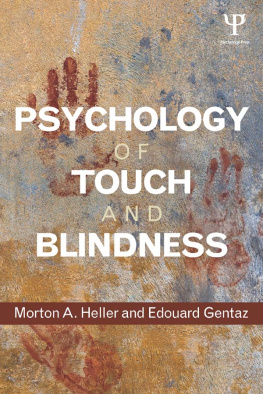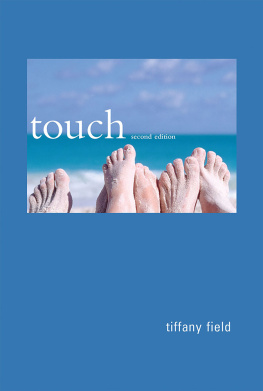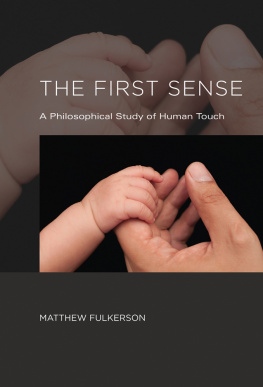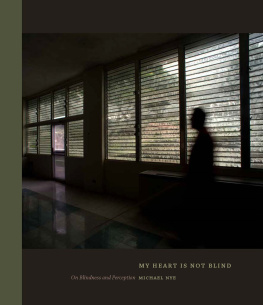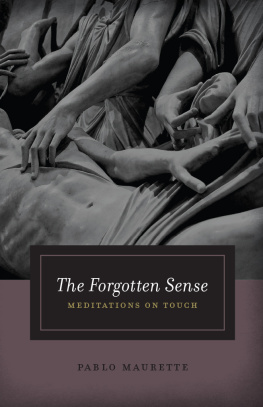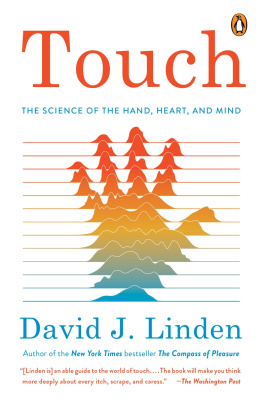Psychology of Touch and Blindness
This book reviews the considerable body of research that has been done to evaluate the touch skills of blind people. With an emphasis on cognitive and neuroscientific approaches, it encompasses a wide-ranging discussion of the theoretical issues in the field of touch perception and blindness.
The volume includes chapters on sensory aspects of touch, perception in blind individuals, multimodal relations and their implications for instruction and development, and new technology, including sensory aids and virtual touch. A distinctive feature of the book is the inclusion of the practical applications of research in this area.
A significant characteristic of research on touch and imagery in congenitally blind individuals is that it speaks to the basic nature of spatial imagery and the importance and necessityor lack thereofof specific visual sensory experience for the acquisition of knowledge about space, spatial layout, and picture perception. As such, the book will not only appeal to researchers and professionals with an interest in touch and blindness, but also to a wider audience of cognitive psychologists and cognitive neuroscientists working in the field of perception.
Morton A. Heller is Professor Emeritus and the former chair of the Psychology Department at Eastern Illinois University. He has edited four books on touch and blindness. Dr. Heller has served on the Editorial Board of Perception, and is an action editor for the journal. He has interests in spatial perception and drawing in blind and sighted people, the relationship between the senses of vision and touch, spatial memory, and illusions in touch and vision.
Edouard Gentaz is Professor of Developmental Psychology at the Faculty of Psychology and Educational Sciences at the University of Geneva and Director of Research at the CNRS Laboratory of Psychology and Neurocognition at Grenoble. His research, which has theoretical and applied dimensions, focuses in particular on the development of sensorimotor and cognitive abilities in typical populations and in blind people. He is the author or co-author of more than 80 articles in refereed journals and several books.
Psychology of Touch and Blindness
Morton A. Heller and Edouard Gentaz
First published 2014
by Psychology Press
711 Third Avenue, New York, NY 10017
and by Psychology Press
27 Church Road, Hove, East Sussex BN3 2FA
Psychology Press is an imprint of the Taylor & Francis Group, an informa business
2014 Taylor & Francis
The right of Morton A. Heller and Edouard Gentaz to be identified as authors of this work has been asserted by them in accordance with sections 77 and 78 of the Copyright, Designs and Patents Act 1988.
All rights reserved. No part of this book may be reprinted or reproduced or utilized in any form or by any electronic, mechanical, or other means, now known or hereafter invented, including photocopying and recording, or in any information storage or retrieval system, without permission in writing from the publishers.
Trademark Notice: Product or corporate names may be trademarks or registered trademarks, and are used only for identification and explanation without intent to infringe.
Library of Congress Cataloging-in-Publication Data
A catalog record for this book has been requested
ISBN: 978-1-84872-945-2 (hbk)
ISBN: 978-1-84872-653-6 (pbk)
ISBN: 978-1-315-88755-5 (ebk)
Typeset in TimesNewRoman
by Apex CoVantage, LLC
Contents
We are very optimistic about the advances that will be forthcoming in research on touch perception. The field has been growing, with the advent of new societies that devote much of their effort to studying touch in a variety of contexts. For example, Eurohaptics is a relatively new society that derives membership from the engineering, robotics, and more traditional academic communities engaging in research on touch. Also, the Multisensory Research Forum is a growing society with many members concerned about the relationship between vision and touch. Finally, a section of Scholarpedia is devoted to research on touch (http://www.scholarpedia.org/article/Encyclopedia_of_Touch).
Advances in the field are likely to have important implications for rehabilitation in blindness, but also in a number of other areas. Robotics is one area that is likely to see large advances, as is the field of virtual reality incorporating touch sensations. In addition to providing entertainment, advances in haptic virtual reality will have a large number of biomedical applications. The development of useful prosthetic devices depends on advancing our knowledge of sensory function as well as engineering. This is an exciting time to be involved in research in touch, and we expect to see a great deal of useful research in the immediate future.
We have learned a great deal about touch in the past few decades. There has been substantial progress in neuroscience and in our understanding of the physiology of sensation. However, there is a lot of room for further growth of knowledge, if we learn to ask the right questions.
Morton A. Heller is grateful for the support he received from Eastern Illinois University while working on this book, and from the National Science Foundation and the National Institutes of Health. He is especially thankful to all of the students, both undergraduate and graduate, who have assisted with the research described in this volume. Special thanks should be extended to all of the visually impaired individuals who willingly contributed to his research effort. Finally, he is grateful to his wife (Faith), daughter (Katherine), and grandson (Wyatt) for their patience and support.
Edouard Gentaz dedicates this volume to his former supervisor and friend, Professor Yvette Hatwell. He is grateful to his family (Laurence, Anaelle, and Matto) for their patience and support. Then, he definitely wants to thank all our colleagues and precious friends with whom he has worked and published in recent years: Frdrique Audoud, Maryse Badan, Gabriel Baud-Bovy, Valrie Camos, Philippe Claudet, Pascale Col, Marco Congedo, Ghislaine Dehaene-Lambertz, Philippe Dessus, Julien Diard, Thierry Dubillon, Florence Gaunet, Christian Graff, Eric Guinet, Bernard Hennion, Caroline Huron, Vronique Izard, Caroline Jolly, Chantal Junker-Tshopp, Gwenael Kaminski, Solne Kalnine, Christian Lorenzi, Marion Luyat, Karine Mazens, David Meary, Martial Mermillod, Dominique Muller, Jean-Pierre Orliaguet, Franois Osiuriak, Richard Palluel-Germain, Olivier Pascalis, Yves Rossetti, Liliane Sprenger-Charolles, Elizabeth Spelke, Arlette Streri, Philippe Vindras, Annie Vinter, and Paolo Viviani. It is also important to acknowledge his current and former doctoral student(s), students, and post-docs: Florence Bara, Laurie Bayet, Jeremy Bluteau, Valerie Chauvel, Caroline Cheam, Henri Faineteau, Julie Feron, Cline Gurin, Anne Hillaret de Boisferon, Stephanie Kerzerho, Elenista Krotomlides, Fleur Lejeune, Nicolas Morago, Laetitia Pinet, Anne Theurel, and Arnaud Witt. Dr. Gentaz does not forget to mention all the teachers and childcare professionals and children and adults with visual impairment who allowed us to achieve our basic and/or applied research in very good conditions. Finally, he would like to thank the various institutions that have supported or still support its research, the CNRS, the foundation Fyssen, the Rhne-Alpes Region, the Ministry of Research, the National Agency for Research (ANR), and universities Geneva, Ren Descartes (Paris 5), and Pierre Mendes France (Grenoble 2).

